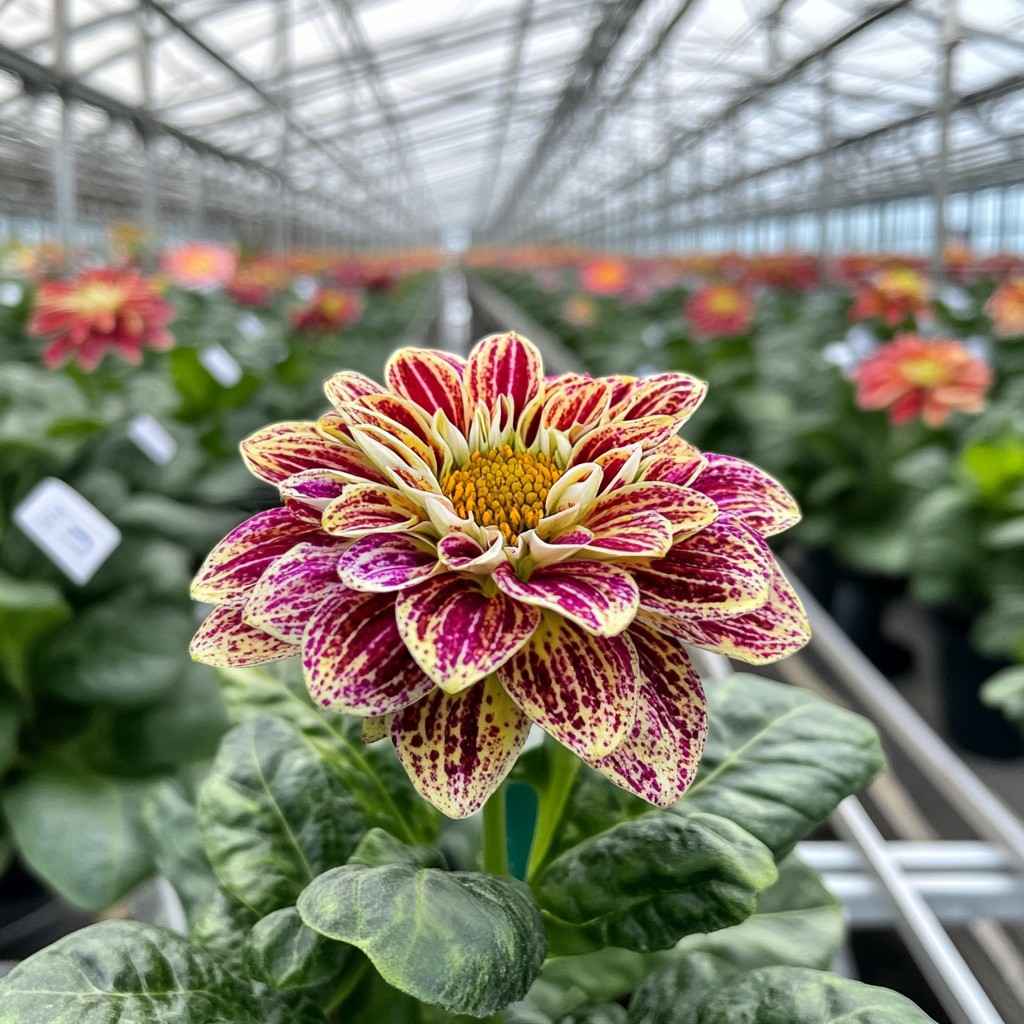Protecting intellectual property is a critical step for inventors. Whether you’ve created a groundbreaking machine, an innovative product design, or even a new type of plant, a patent provides the legal right to stop others from using your invention without permission. Congress has established different types of patents to cover these varied inventions, allowing inventors to maximize their innovation’s value.
In this blog, we’ll explore the types of patents available, how to choose the right one, and the steps required to obtain patent protection in the United States.
Overview of Three Different Types of Patents
Patents come in three primary forms, each designed to safeguard a unique aspect of an invention. Choosing the correct patent depends on the nature of your creation. Let’s dive into these three categories and explore their purposes.
Utility Patent
A utility patent is the most widely recognized and sought-after patent type. It covers inventions with a functional purpose, including new machines, processes, articles of manufacture, and chemical compositions. This patent protects the practical use of your invention and prevents others from making, using, or selling it without your authorization.
Utility patents are ideal for:
- Innovative Devices:
Advanced technologies, like 3D printers, medical imaging machines, or robotic systems, often fall under this category. These devices are designed to solve specific problems or improve existing tools, making them crucial for industries like healthcare, manufacturing, and consumer technology. For instance, robotic systems in surgery enhance precision and reduce recovery times, while 3D printers revolutionize how prototypes and complex components are created. - Unique Processes:
This includes groundbreaking manufacturing techniques, such as environmentally friendly production methods or industrial workflows. These processes often redefine industry standards by improving efficiency, reducing costs, or minimizing environmental impact. An example would be a new technique for recycling plastic into high-strength building materials for automating high-volume tasks in production lines, saving time and resources. - Chemical Compositions:
Utility patents also safeguard chemical innovations, from pharmaceutical drugs to synthetic materials and novel adhesives. These inventions are often the result of extensive research and development. For example, new pharmaceutical drugs might address diseases previously considered untreatable, while synthetic materials with unique properties, such as heat resistance or flexibility, are used in advanced applications like aerospace engineering or wearable technologies.
Design Patent
A design patent focuses on protecting the ornamental or aesthetic aspects of a product, emphasizing its unique visual appeal rather than its functionality. This type of patent is ideal for inventors and businesses whose creations stand out because of their distinctive appearance. By securing a design patent, you can ensure that competitors cannot imitate the visual elements that make your product special.
Design patents are particularly valuable in industries where appearance plays a significant role in attracting customers or building brand identity. For instance, iconic shapes, patterns, or decorative features often become synonymous with a brand’s reputation and market position.
Examples of products covered by design patents include:
- A smartphone’s unique shape and layout: Modern smartphones often incorporate sleek designs and distinctive placements of buttons, cameras, or screens to create brand recognition. A patented design helps companies maintain exclusivity over these visual elements.
- Distinctive patterns on furniture or clothing: From intricately carved woodwork on a chair to a signature pattern on a designer dress, design patents protect these artistic details that contribute to the product’s appeal.
- Stylish product packaging: Innovative and eye-catching packaging, such as uniquely shaped bottles or embossed logos on boxes, can set a brand apart in competitive markets. A design patent ensures these elements remain exclusive to the business.
Design patents offer a powerful tool for safeguarding creativity in competitive industries. They provide legal protection for up to 15 years, allowing businesses to maintain their product’s visual uniqueness without the risk of imitation.
Plant Patent
Plant patents are designed specifically to protect new plant varieties that can reproduce asexually, meaning they are propagated through methods like grafting, budding, or rooting rather than seeds. These patents are essential for safeguarding breakthroughs in agriculture, horticulture, and floriculture, where unique plant traits can significantly enhance productivity, aesthetics, or disease resistance.
By obtaining a plant patent, inventors ensure exclusive rights to grow, sell, and distribute the plant, preventing others from benefiting commercially from their hard work and innovation. This type of patent is especially valuable in an era where agricultural efficiency and sustainability are crucial.
Examples of innovations covered by plant patents include:
- Hybrid fruit trees with improved yield or taste: Examples include apple trees that produce sweeter or more durable fruit, or citrus trees engineered to thrive in specific climates while offering superior flavor profiles. These hybrids can transform markets by delivering better products to consumers.
- Decorative plants with unique colors or growth patterns: Ornamental plants like brightly colored flowers or foliage with unusual shapes attract attention in the floriculture market. For instance, a plant variety with striking variegated leaves or compact growth patterns is highly desirable for home gardening and landscaping.
- Disease-resistant crop varieties: Agricultural plants engineered to resist pests, fungi, or diseases help farmers reduce the need for chemical interventions, lowering costs and environmental impact while ensuring stable yields.
Plant patents last for 20 years from the filing date, giving inventors sufficient time to benefit from their creations. This legal protection supports innovation in plant development, ensuring that advancements in food production, landscape design, and ornamental gardening continue to thrive.
What is a Provisional Patent?
A provisional patent serves as a preliminary step in securing full patent protection. It’s less formal and less expensive than a non-provisional patent but offers crucial benefits to inventors in the early stages of development.
Here’s how a provisional patent works:
- Early Filing Date: By filing a provisional application, you secure an early filing date, which can be vital if someone else develops a similar invention later.
- Patent Pending Status: Once filed, your invention can legally be labeled as “patent pending,” deterring competitors.
- Time to Refine Your Idea: You have 12 months to develop your invention further and prepare a formal non-provisional application.
While a provisional patent does not lead to a granted patent on its own, it’s an invaluable tool for inventors who need time to finalize their ideas while protecting them from potential imitators.
How to Obtain a Patent in the United States
Applying for a patent can be complex, but following these steps will help ensure a smooth process:
- Understand Your Invention
Determine whether your creation is eligible for a utility, design, or plant patent. Clearly define its unique features and purpose. - Conduct a Patent Search
Perform a thorough search of existing patents through the USPTO database to confirm your invention is original. - Prepare Documentation
Keep comprehensive records, including descriptions, drawings, prototypes, and explanations of your invention’s function or design. - Draft Your Application
Prepare a detailed application that meets USPTO standards, including specific claims about your invention’s uniqueness. - Submit the Application
File your application with the USPTO. Pay attention to submission guidelines, deadlines, and applicable fees. - Respond to USPTO Feedback
The USPTO may request clarifications or revisions. Address these promptly to avoid delays. - Collaborate with a Patent Lawyer
Working with a professional ensures your application is robust and compliant, increasing the likelihood of approval.
Getting Legal Advice
Navigating the patent process alone can be overwhelming. Engaging an experienced patent attorney provides invaluable support. Here’s how they can assist:
- Determine Patent Eligibility
Before diving into the patent application process, understanding the specific protections available for your invention is crucial. Attorneys meticulously evaluate the technical and legal aspects of your creation to determine whether it qualifies for a utility, design, or plant patent. - This analysis ensures that your application aligns with the U.S. Patent and Trademark Office (USPTO) standards, saving time and reducing the risk of rejection. If you’re in San Diego, California, consulting with a local attorney familiar with state and federal intellectual property laws provides an added layer of tailored guidance.
- Conduct Patent Searches
An exhaustive patent search is a critical step in preventing conflicts with existing patents. Experienced lawyers use tools and databases to assess whether your invention is unique. This step not only confirms your eligibility for a patent but also provides insights into potential competitors. - Draft and File Applications
Filing a patent requires precision, clarity, and legal knowledge. Patent attorneys ensure that your application is meticulously drafted, including detailed descriptions, claims, and drawings that leave no room for ambiguity. They handle the formalities of submitting your application to the USPTO, ensuring compliance with all legal requirements. A well-prepared patent application is essential to secure your intellectual property rights. - Handle USPTO Communication
The USPTO often raises questions or requests additional information during the review process. Attorneys act as intermediaries, crafting thoughtful and legally sound responses to address these issues. This significantly improves the chances of approval. - Protect Against Infringement
Once your patent is granted, it’s essential to monitor and enforce your rights. Attorneys help you identify and take action against unauthorized use of your invention. From sending cease-and-desist letters to filing lawsuits, they handle the legal intricacies of protecting your intellectual property.
Protect Your Inventions with Heimlich Law PC
Innovation deserves the best protection, and Heimlich Law PC is here to help. Our intellectual property lawyers offer personalized guidance to safeguard your ideas. Whether you’re securing a new patent or addressing infringement issues, we ensure your rights are protected.
Let Heimlich Law PC be your trusted partner in protecting what you’ve worked so hard to create. Safeguard your future today.




